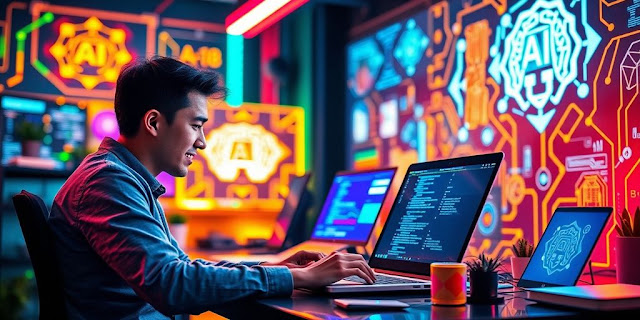In recent weeks, the term "vibe coding" has emerged as a revolutionary approach to software development, leveraging AI tools to enable even non-programmers to create applications. Coined by Andrej Karpathy, a prominent figure in AI, vibe coding allows users to generate code simply by describing their ideas in natural language, making software development more accessible than ever.
Key Takeaways
Vibe coding enables non-programmers to create software using AI tools.
The approach relies on large language models (LLMs) to generate code based on user prompts.
While it democratizes coding, there are concerns about the quality and security of the generated software.
Experts warn that vibe coding should not replace traditional programming skills.
What Is Vibe Coding?
Vibe coding refers to the practice of using generative AI, particularly large language models like ChatGPT, to produce entire codebases based on user prompts. This method allows individuals without programming knowledge to conceptualise and create applications by simply describing their requirements.
The term was popularised by Andrej Karpathy, who described it as a way to "fully give in to the vibes" of coding, suggesting that users can focus on their ideas rather than the technicalities of programming.

The Benefits of Vibe Coding
Accessibility: Vibe coding opens the door for non-technical individuals to bring their ideas to life without needing to learn complex programming languages.
Speed: By leveraging AI, users can quickly generate code, potentially reducing the time it takes to develop software.
Innovation: This approach encourages creativity, allowing more people to experiment with software development and contribute to innovation.
The Challenges of Vibe Coding
Despite its advantages, vibe coding is not without its pitfalls:
Quality Control: The code generated by AI can often be buggy or incomplete, leading to potential issues in functionality and security.
Lack of Understanding: Non-technical users may struggle to assess the quality of the code produced, making it difficult to identify and rectify errors.
Security Risks: Without a solid understanding of programming principles, users may inadvertently create software that is vulnerable to security breaches.
The Future of Vibe Coding
While vibe coding presents exciting opportunities, experts caution against viewing it as a replacement for traditional programming skills. Many believe that while it can enhance productivity, the role of skilled software engineers remains crucial. The consensus is that vibe coding should complement, rather than replace, foundational programming knowledge.
As the technology evolves, it is likely that vibe coding will become more refined, potentially addressing some of the current limitations. However, for those looking to create robust and secure applications, a basic understanding of programming principles will still be essential.
In conclusion, vibe coding represents a significant shift in how software can be developed, making it more accessible to a broader audience. As this trend continues to grow, it will be interesting to see how it shapes the future of software development and the tech industry as a whole.
Sources
Silicon Valley CEO says 'vibe coding' lets 10 engineers do the work of 100—here's how to use it, Fortune.


